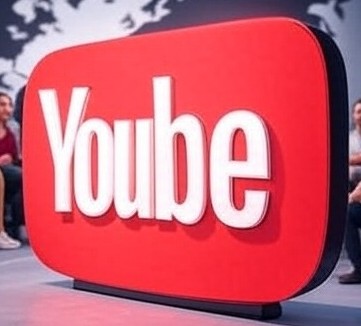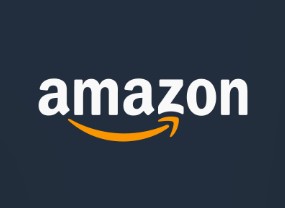YouTube, founded in February 2005, is the world’s leading online video-sharing and social media platform, where users can upload, watch, share, and comment on videos. Acquired by Google in November 2006 for $1.65 billion, YouTube has grown into a cultural and economic powerhouse, shaping entertainment, education, and communication worldwide. With over 2.7 billion monthly active users as of 2025, it is a cornerstone of digital media, accessible in over 100 countries and supporting 80 languages.
History and Evolution
YouTube was created by Steve Chen, Chad Hurley, and Jawed Karim, with the first video, “Me at the zoo,” uploaded by Karim on April 23, 2005. Initially a platform for amateur videos, it quickly expanded to include professional content, music, tutorials, gaming, and more. Key milestones include:
- 2006: Google’s acquisition enabled infrastructure scaling and monetization through ads.
- 2007: Introduction of the YouTube Partner Program, allowing creators to earn revenue.
- 2011: Launch of YouTube Analytics, giving creators insights into viewership.
- 2015: YouTube Red (now YouTube Premium) introduced ad-free streaming and original content.
- 2018: YouTube Music launched as a dedicated music streaming service.
- 2020s: Growth of YouTube Shorts, a short-form video feature competing with TikTok.
Today, YouTube processes over 500 hours of video uploaded every minute, reflecting its massive scale.
Features and Functionality
YouTube offers a versatile platform with features catering to diverse audiences:
- Video Content: Ranges from entertainment (vlogs, movies, music videos) to education (tutorials, lectures), gaming, and live streaming.
- YouTube Shorts: 60-second vertical videos designed for mobile viewing, introduced in 2020.
- YouTube Premium: A subscription service ($13.99/month in the U.S. as of 2025) offering ad-free viewing, offline playback, and access to YouTube Music.
- YouTube Music: A standalone music streaming service competing with Spotify and Apple Music.
- Live Streaming: Supports real-time broadcasts for events, gaming, and Q&A sessions.
- Community Features: Comments, likes, shares, and subscriptions foster interaction. The Community tab allows creators to post polls, images, and text updates.
- Monetization: Through the YouTube Partner Program, creators earn from ads, channel memberships, Super Chats, and merchandise shelves.
- Analytics: Creators access detailed metrics on watch time, audience demographics, and revenue.
- Accessibility: Subtitles, captions, and multi-language support enhance inclusivity.
Monetization and Creator Economy
YouTube has transformed content creation into a viable career for millions. The YouTube Partner Program allows creators to monetize content once they meet thresholds (1,000 subscribers and 4,000 watch hours in 12 months). Revenue streams include:
- Ad Revenue: Based on CPM (cost per thousand views), varying by region and content type.
- Channel Memberships: Fans pay monthly for exclusive perks like badges and emojis.
- Super Chat/Stickers: Paid messages during live streams.
- YouTube Premium Revenue: Shared with creators based on watch time.
- Brand Deals: Creators collaborate with brands for sponsored content.
Top creators like MrBeast, T-Series, and PewDiePie have built media empires, with T-Series boasting over 250 million subscribers as of 2025. However, monetization policies, such as demonetization for controversial content, remain a point of contention.
Cultural and Social Impact
YouTube has reshaped how people consume media and learn:
- Education: Platforms like Khan Academy and CrashCourse offer free learning resources.
- Entertainment: YouTube hosts music videos, movie trailers, and original series, with 70% of watch time on mobile devices.
- Social Movements: It amplifies voices on issues like climate change, mental health, and social justice, though it also faces criticism for misinformation.
- Global Reach: Localized content and translations make YouTube a global platform, with India, the U.S., and Brazil among the largest markets.
Challenges and Controversies
YouTube faces several challenges:
- Content Moderation: Balancing free speech with the removal of harmful content (e.g., misinformation, hate speech) is ongoing. YouTube uses AI and human moderators, but controversies persist.
- Algorithm Bias: The recommendation algorithm, which drives 70% of watch time, has been criticized for promoting sensational or polarizing content.
- Copyright Issues: The Content ID system flags copyrighted material, but disputes between creators and rights holders are common.
- Creator Burnout: The pressure to produce frequent, high-quality content leads to mental health challenges for creators.
- Ad Policies: Frequent policy changes affect creator earnings, sparking debates over transparency.
Technology and Infrastructure
YouTube’s backend is powered by Google’s infrastructure, handling massive data loads. Key technical aspects include:
- Video Encoding: Supports formats like 4K, 8K, and HDR for high-quality streaming.
- AI Algorithms: Drive recommendations, content moderation, and thumbnail optimization.
- Global CDN: Content Delivery Networks ensure fast streaming worldwide.
- Mobile Optimization: Over 70% of YouTube’s traffic comes from mobile devices.
YouTube in 2025
As of 2025, YouTube continues to innovate:
- AI Integration: Enhanced AI tools for video editing, auto-generated captions, and personalized recommendations.
- Short-Form Content: YouTube Shorts has grown, with over 50 billion daily views.
- E-commerce: Integration of shopping features allows creators to sell products directly.
- Sustainability: Google’s commitment to net-zero emissions influences YouTube’s operations, with energy-efficient data centers.
Competitors
YouTube faces competition from:
- TikTok: Dominates short-form video.
- Twitch: Leads in gaming and live streaming.
- Vimeo: Focuses on professional and ad-free content.
- Streaming Services: Netflix, Disney+, and Amazon Prime compete for premium content.
Future Outlook
YouTube is poised for further growth, with trends like immersive VR content, expanded e-commerce, and deeper AI integration on the horizon. However, it must address regulatory pressures, such as EU laws on content moderation, and maintain trust with creators and users.
Conclusion
YouTube’s journey from a startup to a global platform reflects its adaptability and cultural significance. It empowers creators, educates billions, and shapes digital culture, but it must navigate complex challenges to sustain its dominance. As it evolves, YouTube remains a vital space for creativity, connection, and discovery.
Key Stats (2025):
- Monthly Active Users: 2.7 billion
- Daily Video Views: Over 1 billion hours
- Revenue (2024 estimate): $31.5 billion (from ads and subscriptions)
- Top Channel: T-Series (250M+ subscribers)
- Mobile Usage: 70% of watch time
For the latest updates, check YouTube’s official blog or follow creators on the platform. If you’d like us to analyze specific YouTube channels, videos, or trends, let us know!















Leave a Reply